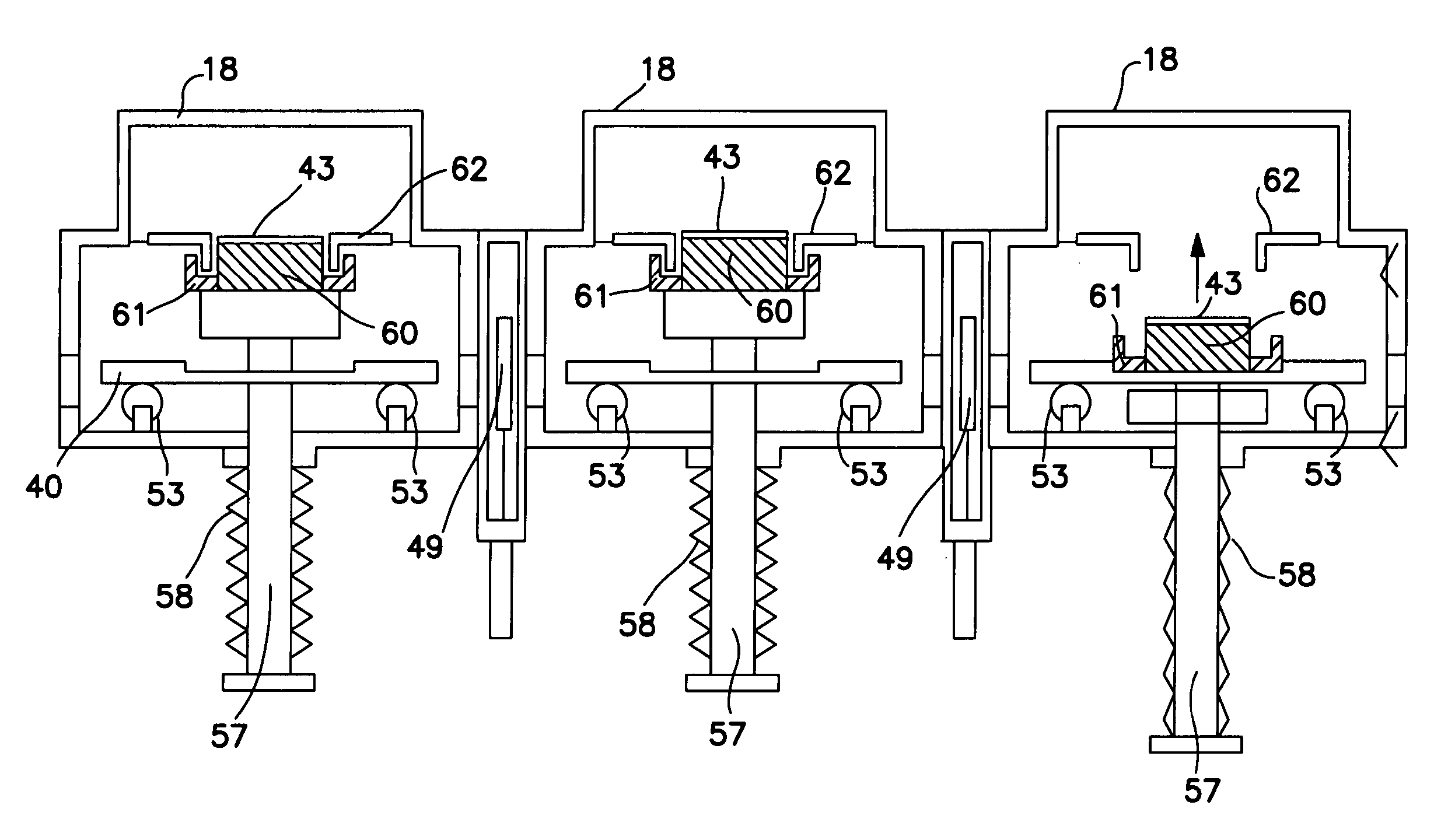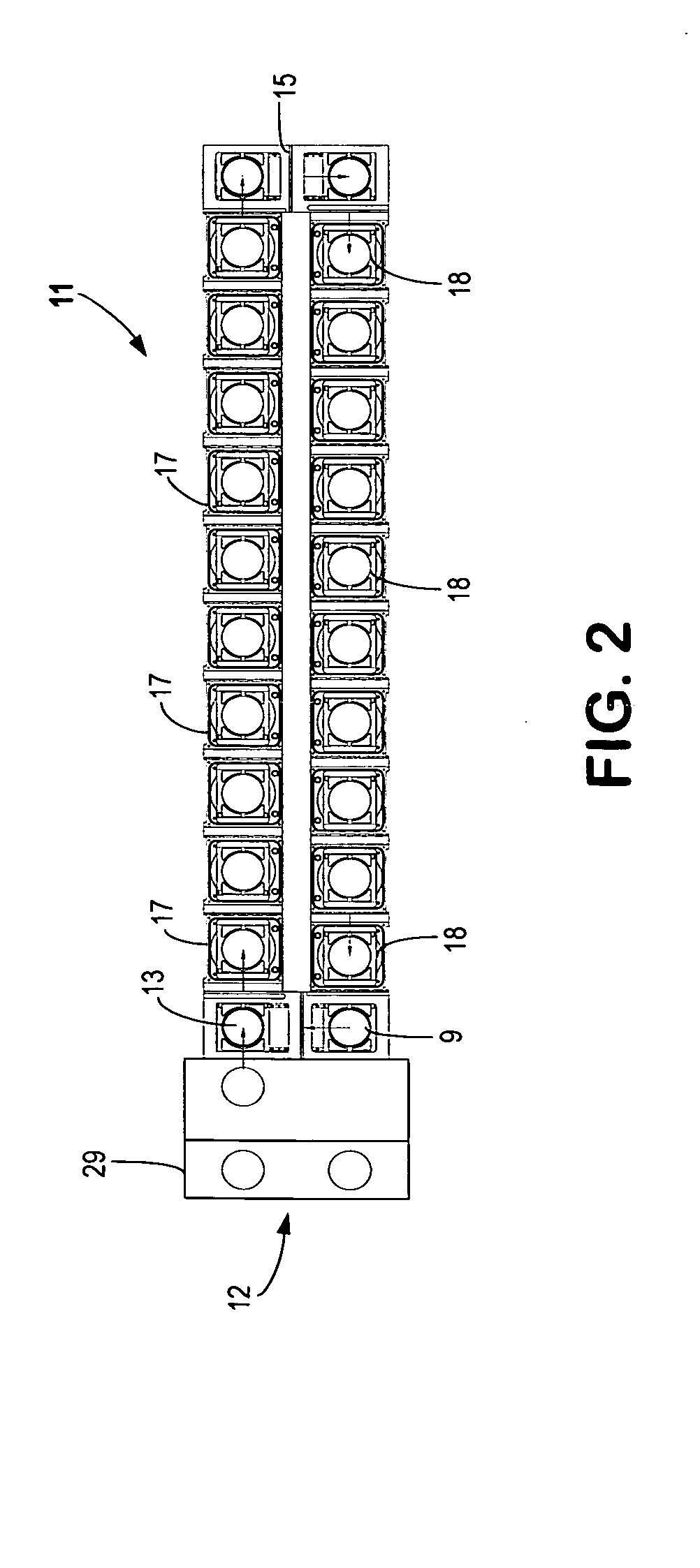Wafer fab
a technology of wafer fab and fab sheet, which is applied in the direction of coating, chemical vapor deposition coating, metallic material coating process, etc., can solve the problems of increasing the need for expensive and special facilities, increasing the cost of manufacturing in the wafer fab area, and reducing the space required. , the effect of preventing breakag
- Summary
- Abstract
- Description
- Claims
- Application Information
AI Technical Summary
Benefits of technology
Problems solved by technology
Method used
Image
Examples
Embodiment Construction
[0016] Referring now to FIG. 1, there is shown as an example of an embodiment of this invention, a 20 station system. Although in this Figure, a certain number of stations are shown, it should be understood that this invention may be practiced in a system with more or less stations depending on the needs at the installation. Also different stations are illustrated on the left side compared to the right side (which in the Figure appears as in the rear or in the front, respectively). However, a selection of stations may be made other than the ones shown and the unit will function in accordance with its intended purpose. In this Figure, 11 represents the 20 station system. The front end of the system 12 is where load lock 13 is located. At the opposite end is a transverse or shuttle chamber 15 and power supplies 16 for the process chambers, transport systems and other mechanisms of the system. In this Figure, like appearing process modules 17, appear along the left side viewing from th...
PUM
| Property | Measurement | Unit |
|---|---|---|
| Time | aaaaa | aaaaa |
| Size | aaaaa | aaaaa |
| Transport properties | aaaaa | aaaaa |
Abstract
Description
Claims
Application Information
 Login to View More
Login to View More - R&D
- Intellectual Property
- Life Sciences
- Materials
- Tech Scout
- Unparalleled Data Quality
- Higher Quality Content
- 60% Fewer Hallucinations
Browse by: Latest US Patents, China's latest patents, Technical Efficacy Thesaurus, Application Domain, Technology Topic, Popular Technical Reports.
© 2025 PatSnap. All rights reserved.Legal|Privacy policy|Modern Slavery Act Transparency Statement|Sitemap|About US| Contact US: help@patsnap.com



